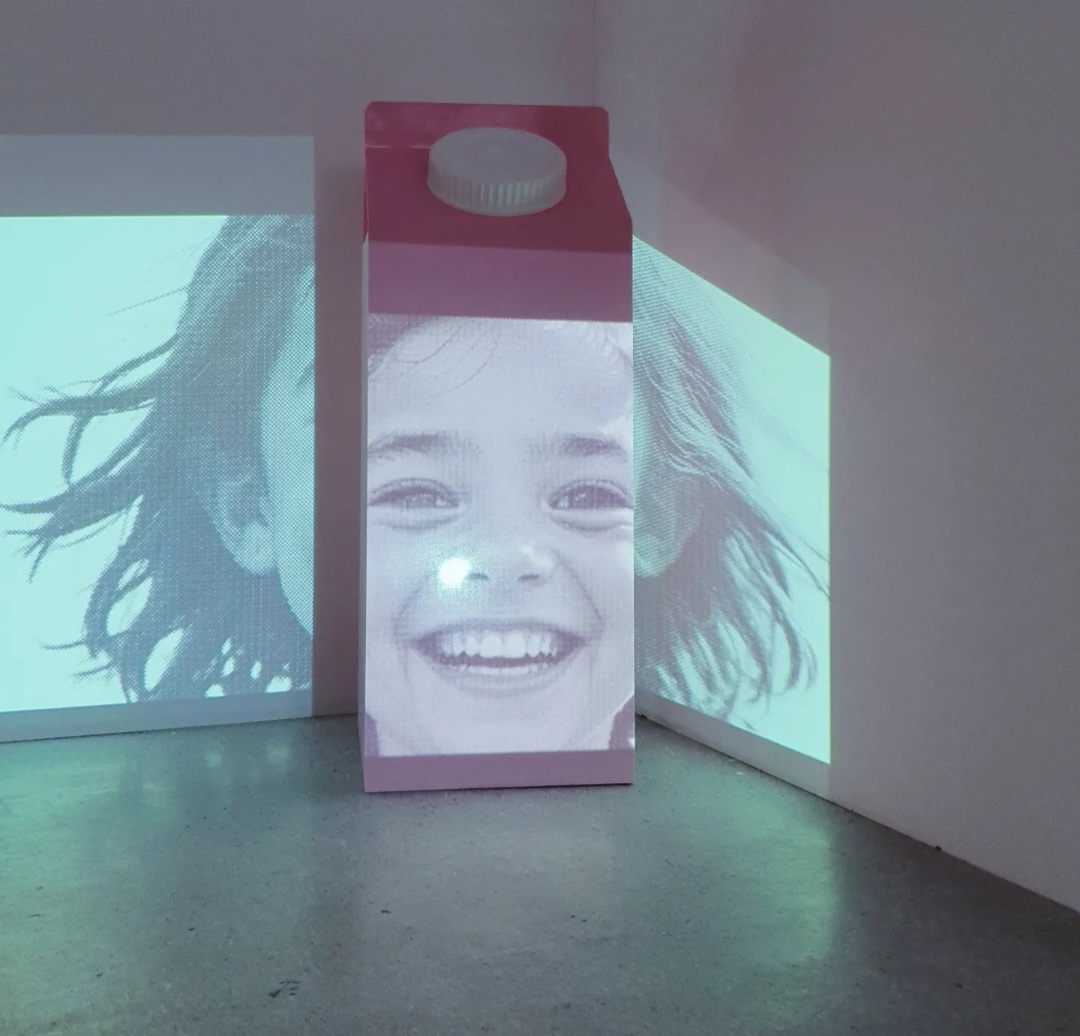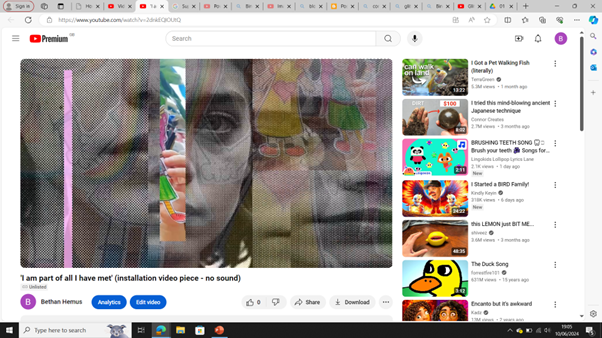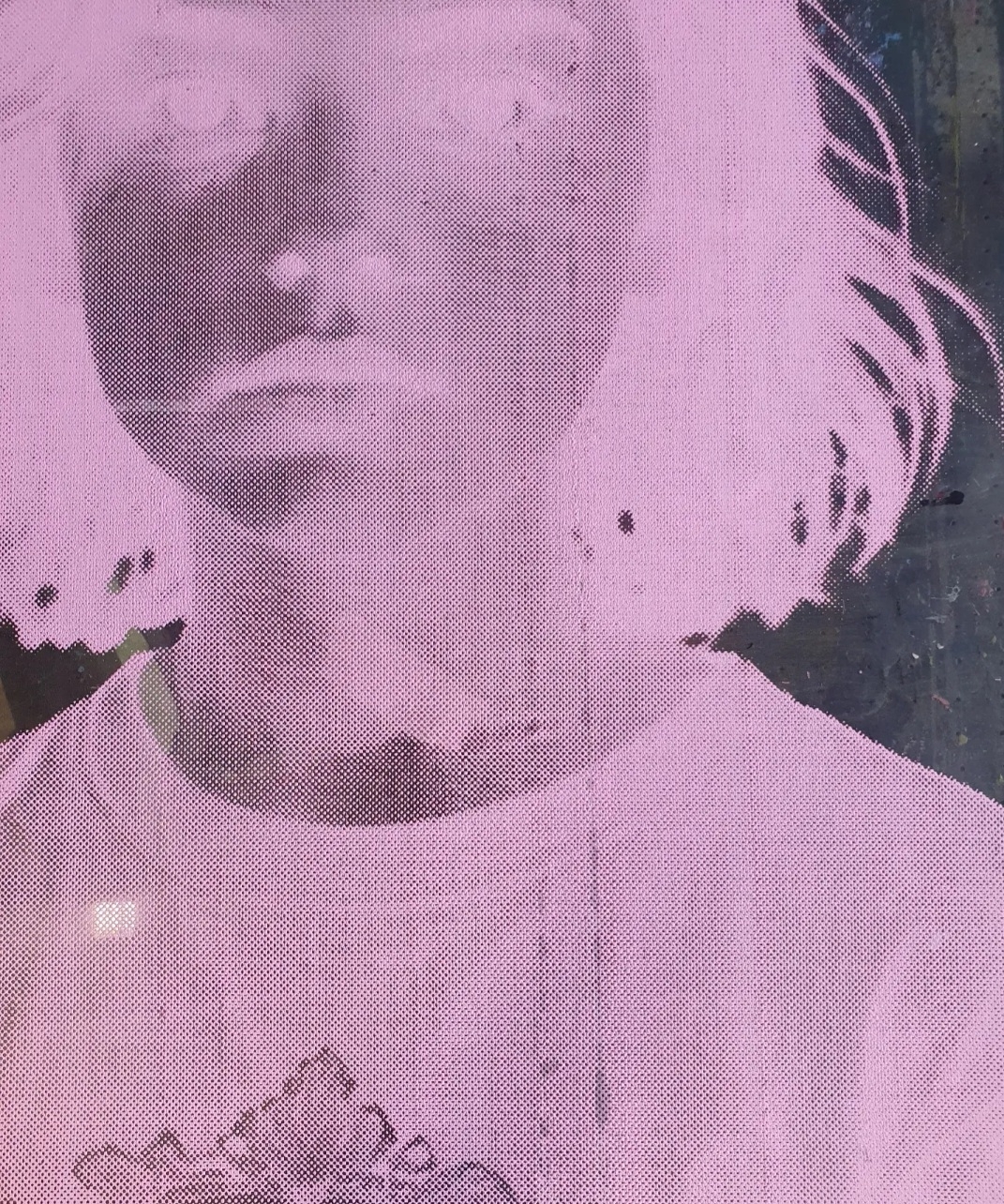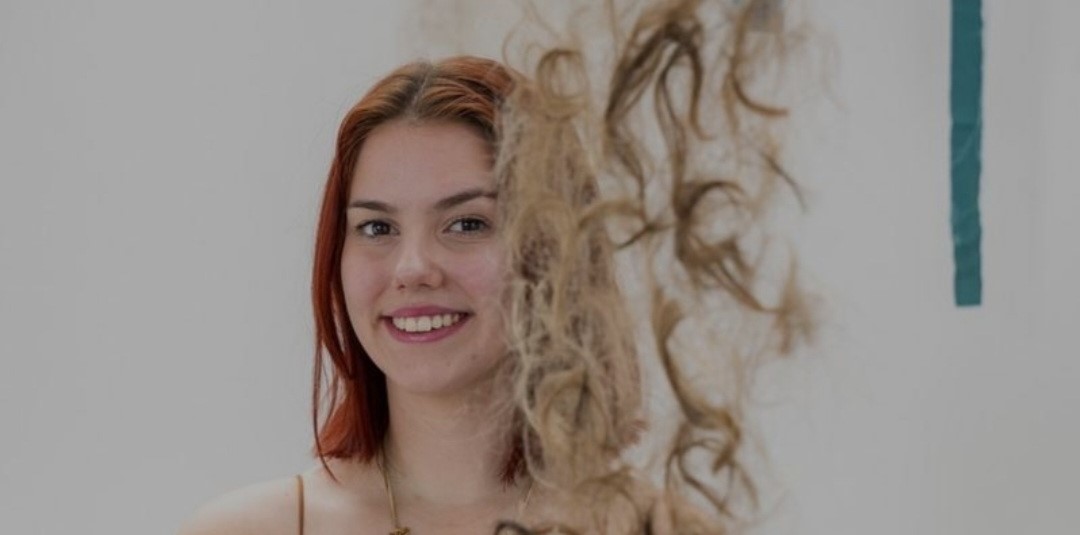The same child’s face is screen printed on reclaimed screen gauze in Miller-Baker pink, and suspended in succession using the marbles fixings in this found object; which is an old print drying rack leant to me by a kind technician. The marbles amplify the sense of childlike innocence already present in the colour piece.
Found objects like this are valuable because they encourage the audience to attach their own unique meaning to items.
I really tried to push the visual coding in this piece.
The repetition evokes the sense of a factory production line and sequencing; appropriate as this is an AI image generated by a machine using repetitive code.
The way that the found object allows the images to recede into the distance creates the feeling that it is a timeline repository or catalogue of some kind.
It also suggests the different versions of state that anything can become. That any human can become. This a suggestion of anything being possible creates an infinite quality.
I worked hard on creating paradox in the child’s expression. The image has a benign feel like a year book or passport photo. But it also feels loaded, akin to a photo you would see in a newspaper article about tragedy or criminal activity.
I am pleased with this piece of the installation, largely because it was born entirely out of making experimentally, following my instincts unfettered, and exploring displaying my work creatively.
I would like to explore the mechanism of sequencing/ layering images more in the future, after taking inspiration from other artists who work this way; including printing on different media and playing with scale and with the orientation of the panels.































